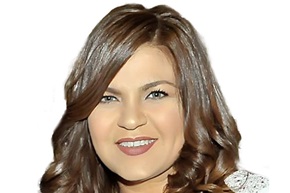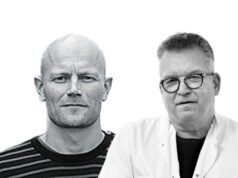 Dalia Dawoud (Nephrology Associates Medical Group, Azura Vascular Care, Riverside, USA)—the programme chair of the most recent American Society of Diagnostic and Interventional Nephrology (ASDIN) annual scientific meeting (23–25 February 2024, New Orleans, USA)—sat down with Renal Interventions to discuss what she felt were some of the key highlights of the meeting, including the important role that home haemodialysis (HH) plays, new data that have come to light regarding the costs of catheterisation and catheter-related bacteraemia, and what she refers to as the “dos and don’ts” of preservation of vascular access.
Dalia Dawoud (Nephrology Associates Medical Group, Azura Vascular Care, Riverside, USA)—the programme chair of the most recent American Society of Diagnostic and Interventional Nephrology (ASDIN) annual scientific meeting (23–25 February 2024, New Orleans, USA)—sat down with Renal Interventions to discuss what she felt were some of the key highlights of the meeting, including the important role that home haemodialysis (HH) plays, new data that have come to light regarding the costs of catheterisation and catheter-related bacteraemia, and what she refers to as the “dos and don’ts” of preservation of vascular access.
RI: For the first time in the history of ASDIN, you have had a whole session dedicated to home haemodialysis. Why is this important, and what are the key strands for people to think about?
Dalia Dawoud: Medicaid and Medicare funding for dialysis has significantly increased, emphasising the importance of delivering a high quality of care that is also cost-effective. HH has emerged as a pivotal focus, consistently showing its cost-effectiveness and positive impact on patient outcomes compared to traditional in-centre haemodialysis.
A significant aspect highlighted in the session was the optimisation of vascular access care for HH. The conventional “fistula first, catheter last” approach can limit access to HH for patients who do not fit the standard criteria for optimal access. This rigid approach fails to consider the individualised clinical needs of each patient. The session also emphasised the importance of customising care to meet the specific needs of each patient. This involves considering factors like age, multiple comorbidities, short-term life expectancy, challenging vasculature, and patient preferences. It was stressed that every patient should have the chance to explore HH, even if it means departing from conventional methods.
The key message was unmistakable: Healthcare providers must not accept “no” as the final answer, and they should overcome any obstacles to deliver the highest quality, individualised care when transitioning patients to HH. This approach not only improves patient outcomes and quality of life but also ensures a more effective allocation of healthcare resources.
RI: What can you tell us about the new data regarding the costs of catheters?
Dalia Dawoud: For many years, there has been a strong initiative advocating for arteriovenous fistulas (AVFs) as the primary choice for optimal access. This stems from concerns about the substantial costs and poor outcomes associated with catheter-related bloodstream infections, which have led to the perception that catheters are less desirable for this purpose.
However, recent data suggest that catheters have the lowest access-related costs compared to both endovascular and open AVF interventions, particularly when considering all associated costs with maturation procedures and interventions needed to manage failure of AVFs. It’s important to note that only about 60% of AVFs mature, and approximately a third of all fistulas created require intervention to meet maturation criteria and be suitable for cannulation.
Therefore, while my presentation does not endorse catheters, it emphasises the need for tailored patient care based on individual clinical requirements rather than solely on cost considerations or reported data.
RI: Can you summarise the essence of the dos and don’ts of preservation of vascular access?
Dalia Dawoud: During the session, a key focus was the ethical responsibility of vascular access care providers in distinguishing between routine follow-up appointments that may be unnecessary and the critical, ongoing care required to maintain vascular access. This approach seeks to ensure the highest level of patient care while efficiently managing resources. This topic resonated strongly with the audience, highlighting the importance of managing this balance effectively to avoid compliance issues and ensure optimal patient outcomes.












